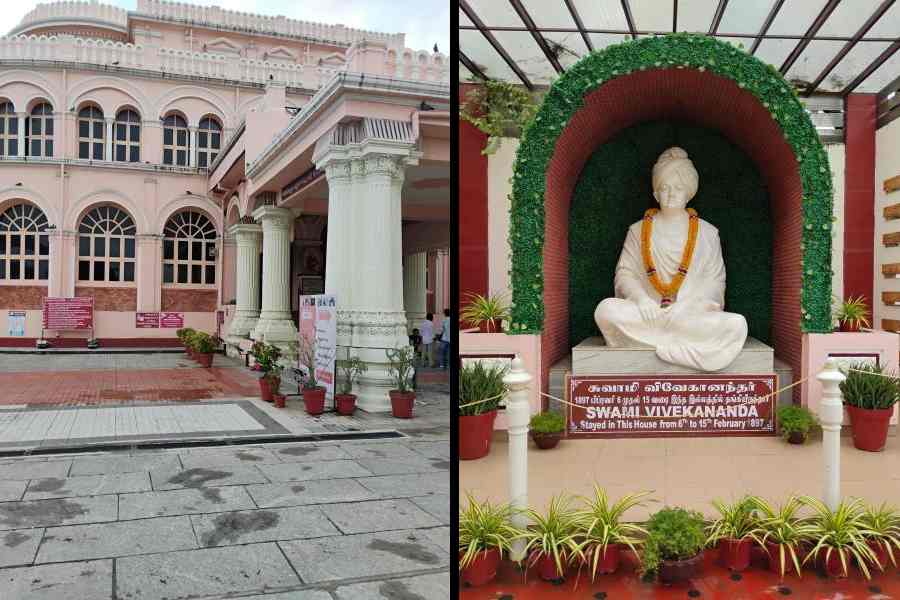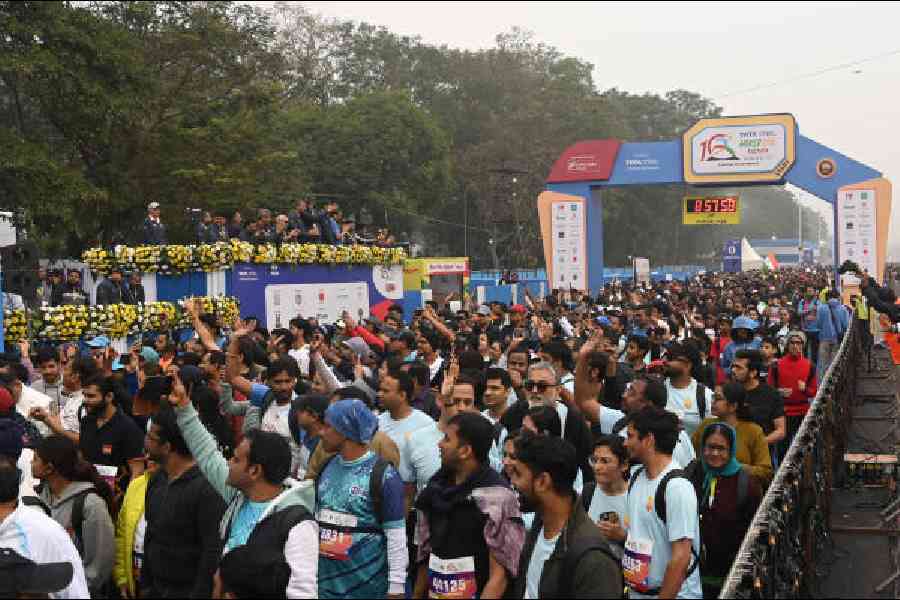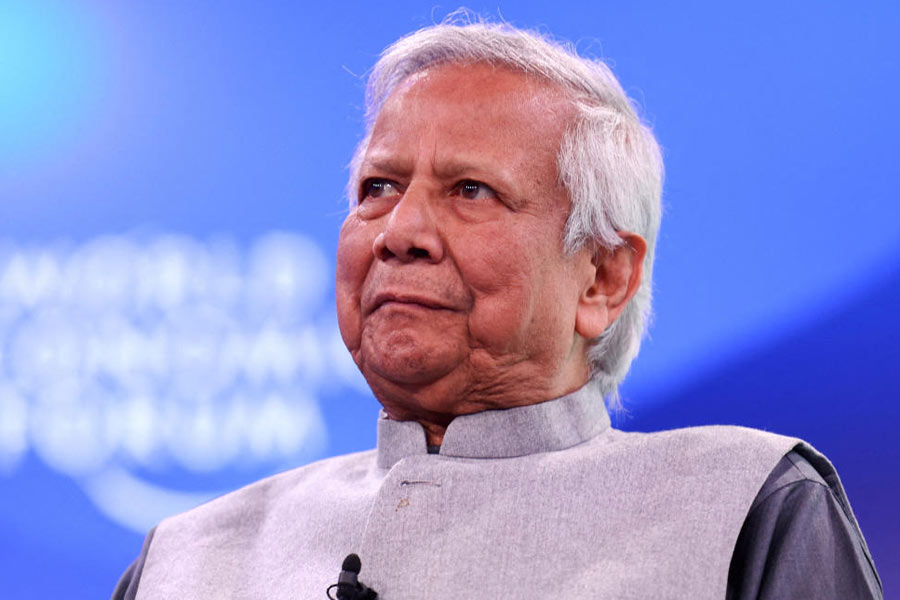 |
Susmita Barman, a Calcutta-based housewife, had been saving money for years to buy some gold jewellery for her younger sister’s wedding. When the marriage was fixed last month, gold prices were at an all time high — around Rs 27,000 per 10 gram. Unsettled by the skyrocketing price, Barman decided to buy the ornaments from a small shop in Bowbazar — Calcutta’s jewellery hub — thinking that the cost would be somewhat lower than that in bigger establishments.
The owner of the shop reassured her, saying, “Our ornaments don’t cost much because we don’t go for the fancy hallmarked gold that’s sold by the big jewellers. But the quality of our gold is as good as theirs.”
Now, Barman was faced with a serious question — could she risk buying ornaments without a hallmark (which is a guarantee of the purity of gold), especially since gold is selling at stratospheric prices?
If you are buying gold jewellery this festive season, you could be asking yourself the same question. The hallmark on gold jewellery is provided by the Bureau of Indian Standards (BIS), the country’s apex standards body, which is under the aegis of the Union ministry of consumer affairs. “Hallmark is a certification of purity or fineness in gold articles and is provided by us in accordance with certain international specifications,” says D. K. Chaudhuri, deputy director general of BIS.
A hallmark on a gold ornament is inscribed as a triangle-shaped logo of BIS, along with the jeweller’s initials, the fineness or purity number and the year of its manufacture. These marks are engraved at the back of the jewellery. For instance, the inside rim of a ring or a bangle will bear the BIS hallmark.
However, hallmarking is not mandatory in India. “That is why a large number of jewellers sell gold that’s not hallmarked. In fact, some even misguide customers and tell them that hallmarking is an expensive affair. In reality, the charges of hallmarking are nominal,” reveals Chaudhuri.
Jewellers who want to sell hallmarked gold have to become a “BIS Certified” jeweller. “To get a BIS certification, the jeweller has to apply to the BIS and ensure homogeneity (uniformity) of batches of jewellery offered for hallmarking by following systematic quality control,” says Anindya Chakrabarti, a BIS scientist.
After registration, BIS officials conduct a preliminary inspection of the retailer. A sample is taken from the jeweller’s retail or manufacturing premises for testing. If the test report is satisfactory, a BIS licence is granted to the jeweller.
However, jewellers cannot put the hallmark stamp on their own. They have to send the jewellery to BIS-authorised hallmarking centres to get the ornaments evaluated for purity or fineness. “BIS maintains strict surveillance of these centres. The recognition of a hallmarking centre is renewed every three years,” says Chakrabarti. Any malpractice on its part can result in the cancellation of its licence and attracts penalties under the BIS Act.
So should you only buy hallmarked gold? The experts certainly seem to think so. Says Harshad Ajmera, who heads J.J. Hallmarking Centre, a BIS-authorised gold assaying lab in Calcutta, “Customers must always insist on hallmarked gold jewellery. If you have this purity mark, it’s easier for you to sell or mortgage it if you ever need to.” One can even sell the jewellery abroad and get the best price, he adds.
Ajmera says hallmarking helps jewellers too because most of them outsource jewelleries to a number of small manufacturers. “Some of these manufacturers tend to add too much impurities to gold. If the jewellers get the gold assayed in an authorised lab before they sell it, they can ensure better quality control for their products.” Agrees Prabir Kumar Sen, director, B.C. Sen & Company Ltd, a leading jeweller in Calcutta, “Hallmarking has come as a boon for jewellers like us who never compromise on quality”. Ever since the quality mark was introduced customers have stopped asking why their gold is relatively “expensive” and why they can’t offer discounts on their jewellery, he says. “Previously customers often challenged our price structure. It was difficult to convince them that unless you add a lot of impurity it’s impossible to offer discounts on gold jewellery”.
In its purest form (24 carat) gold is so soft that it can’t be used for making jewellery, especially when the design is intricate or if it is studded with gemstones. “Unless a little silver, copper or zinc is added, gold cannot be soldered at a high temperature,” reveals Pankaj Parekh, chairman (eastern region), Gems and Jewellery Export Promotion Council. This is why most gold jewellery has 91.6 per cent purity or 22 carat (K).
By and large, the purity of gold ornaments ranges from 18K to 22K. “In percentage terms, 18K means a 75 per cent purity (denoted as 750 in the hallmark) and 22K signifies a 91.6 per cent purity (denoted as 916 in the hallmark),” says Chakrabarti. The percentage of purity is important as the price you pay depends on it, adds Parekh.
Of course, an unscrupulous retailer can dupe customers even when the jewellery is hallmarked. If the customer is unaware of the significance of the purity numbers, he or she can pay the price for 22 carat gold even though the ornament may actually be made with 18 carat gold and carries a BIS hallmark to that effect.
“To check such frauds, customers should insist on a bill or invoice which mentions the carat clearly,” advises Chaudhuri. The bill should also mention the date of purchase, the weight of the gold, the making charge and the value-added tax. “Sometimes customers want to save a few thousand rupees by avoiding the actual receipt. But without a bill you won’t be able to take any action against the jeweller in case of fraud,” he adds.
In case of any doubt, consumers can also go to a hallmarking centre and get the purity of the gold checked. There are 158 gold hallmarking centres in India. Of these 8 are in Calcutta alone. A complete list of hallmarking centres and hallmark-licensed jewellers is available in the official BIS website (www. bis.org.in/cert/ hallbiscert.htm ).
So the next time you decide to buy the yellow metal — which is becoming more precious by the day — make sure that it’s hallmarked and hence gives you a guarantee of its purity.
gOLD STANDARD
When buying gold jewellery, check
■ The stamp of the Bureau of Indian Standards (BIS)
■ The purity number (eg: 958 denotes 23 carat, 916 denotes 22 carat, 875 denotes 21 carat and 750 denotes 18 carat)
■ The logo of the BIS-recognised hallmarking centre where the jewellery has been evaluated and hallmarked
■ The year of marking (denoted by a code letter decided by the BIS — such as ‘N’ for 2011, ‘J’ for 2008)
■ The identification mark of the BIS-certified jeweller










